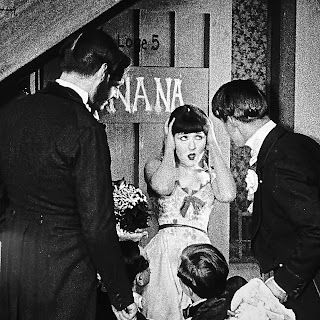Louis Feuillade's First Serial Epic
Episode One: Fantômas
As Pedro Costa once put it, "A second is an hour in John Ford." We learned in the papers a few weeks back about 'units of time' being made up, perhaps, of (presently, experimentally) most-discrete 'bits': measurements have returned from recent scientific experiments that have gauged and validated the most detectable unit of time as a trillionth-trillionth of a second or shorter.
Rooms confused, and nary a staircase to be found — the camera re-set-up from Set A to Set B; one might question the distance in time and spatial configuration between the successive Locations/Scenes, a cubist reconfiguration avant la lettre of Borzage's 7th Heaven.
A Feuillade* master-shot as conceived for the first time in Fantômas [1913-1914], perhaps even a lengthier two-shot, consists of 80% background: sometimes a mere drawing-room, and other times a majestic foyer, which exudes at once nefarious encroachment and menacing embrace or outright encumberment.
* (for non-French-speakers: the director's name is pronounced "Fuh-YAHD.")
Episode Two: Juve contre Fantômas [Juve vs. Fantômas]
The sets (approximations of living-spaces, at the same time something elevated in Feuillade's, — or our own, — portray conception and perception of the land of the living), within the confines of cinema, run tangential to death. Two operations: the interiors and the exteriors forgo the scenes of different method of acting direction, vs. the stage... Despite the difference in degrees of control, Feuillade fills his interiors with just enough panache and gives over to a control of high necessity, whereas in the uncontrollable setting of the Parisian streets he films the action like a documentary. The two domains, according to Chabrol on a making of focusing on behind the scenes of La cérémonie.
Episode Three: Le mort qui tue [The Killing Corpse]
Larger than life or Paris, a super-villain, 'a shadow o'er the land,' this nefarious figure Fantômas steals... pearl necklaces! Fantômas presents its eponymous make: larger than the actuality less changed than his battles would seem to suggest. The surreal dominates; as in all of Feuillade's movies: a zeitgeist inflection, and precursor to Lang's Dr. Mabuse, where the persuasive element here is the run-up to the Great War. Prophetic, in many ways a precursor akin to a reëxamination of Renoir's The Rules of the Game.
Fantômas fills so many 'posts' — Nanteuil the banker — and demonstrates the cruel action of step after step in the execution of a task — say, moving a trunk from one residence to another; in later films or those by other filmmakers this would be deemed unacceptable.
Episode Four: Fantômas contre Fantômas [Fantômas vs. Fantômas]
Regularly throughout this film and subsequent Feuillade serials, there's a dreamlike mixing of the real and mise-en-scène... Actions take longer than they should; the editor holds the spectator trapped, camera motionless.
Fantômas wields an autonomous control in part by and on Feuillade who directs the blocking and chooses his subjects.
The ending of this fourth episode's plumb crazy: Fantômas's pair of captors plunge into two perfectly dug holes covered over by dry grass! As though Fantômas had taken prior planning to ensure this trap down to the pinky-toe position...
Episode Five: Le faux magistrat [The Fake Magistrate]
The earliest serial example of Feuilladean acting. The predictability of the aforementioned escape at the end of Episode Four. The shot angle predicts the occurrence.
In sum: Fantômas represents (all representation) the personification and straw-man of crime. •
===

















